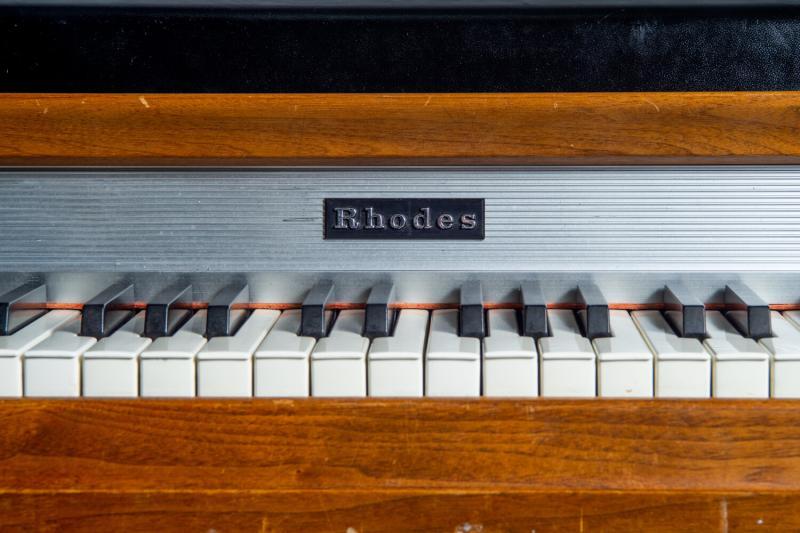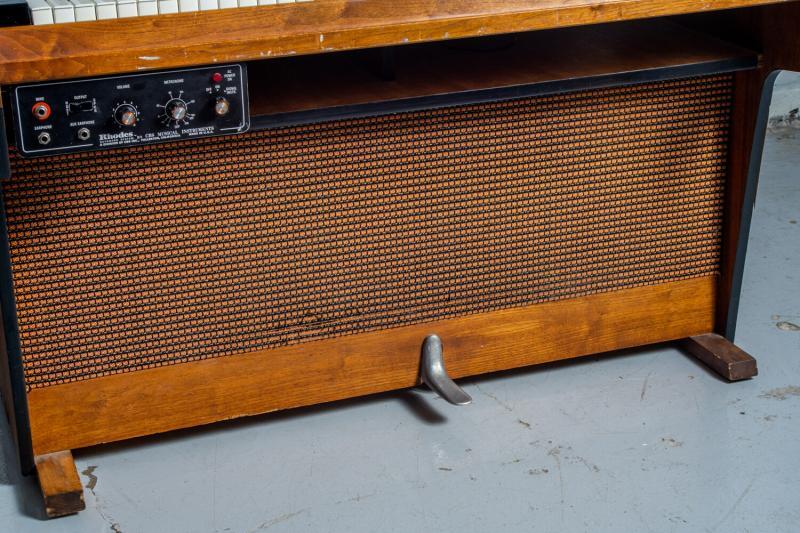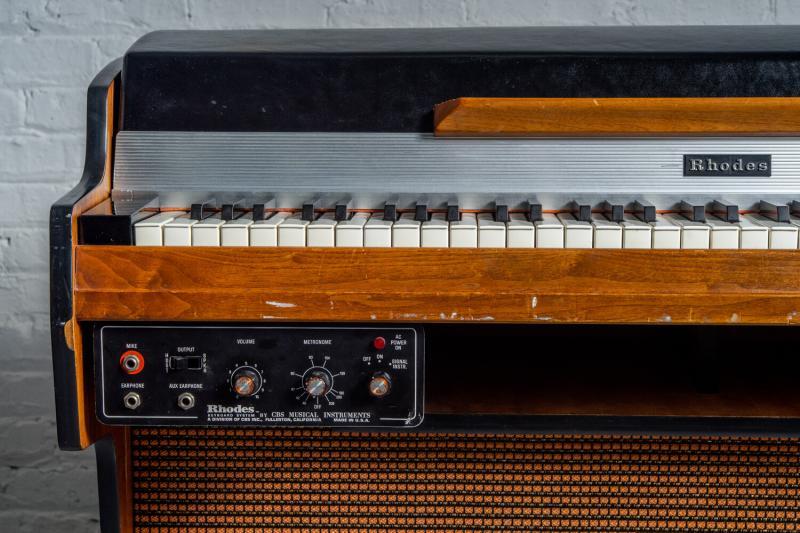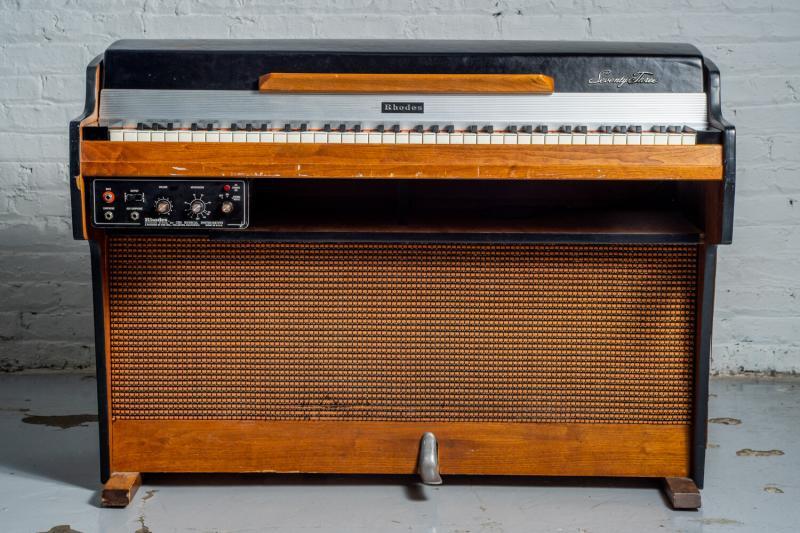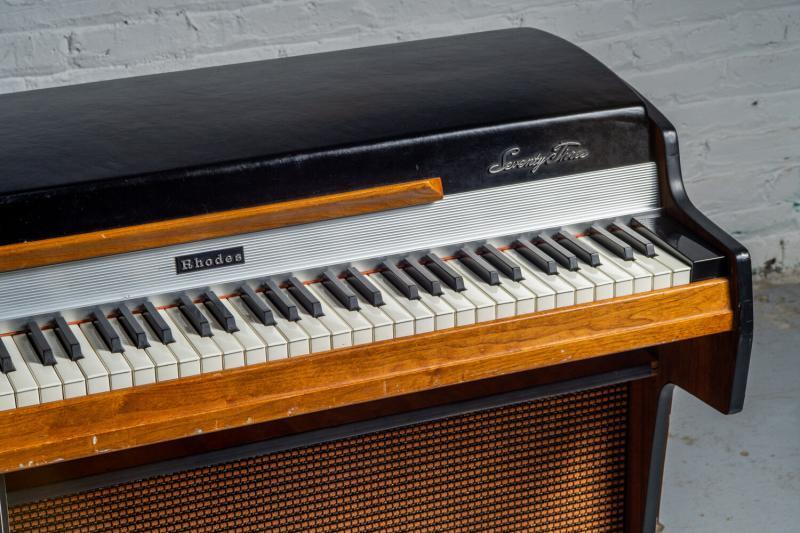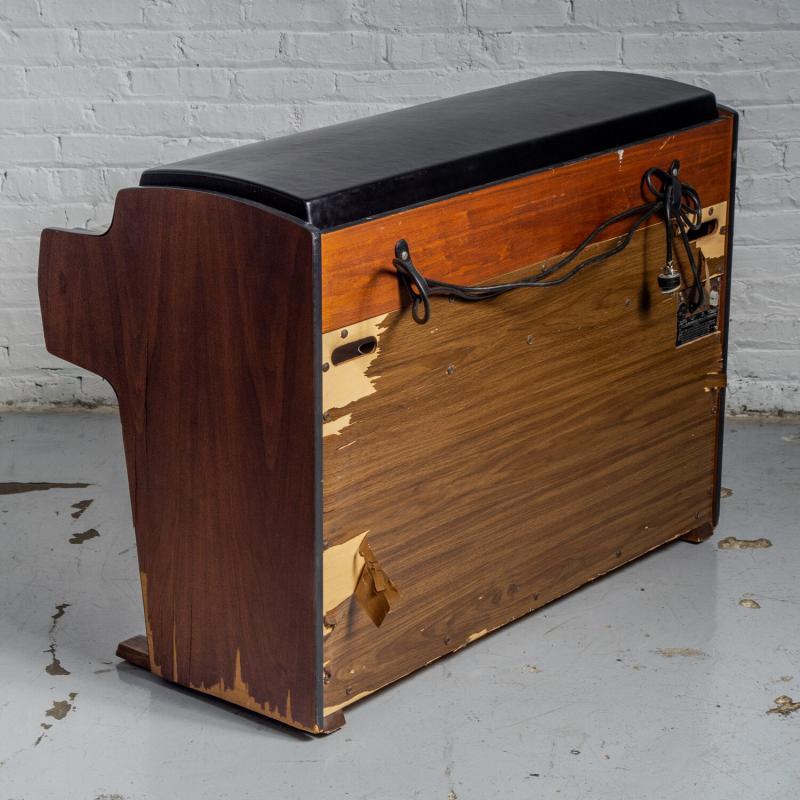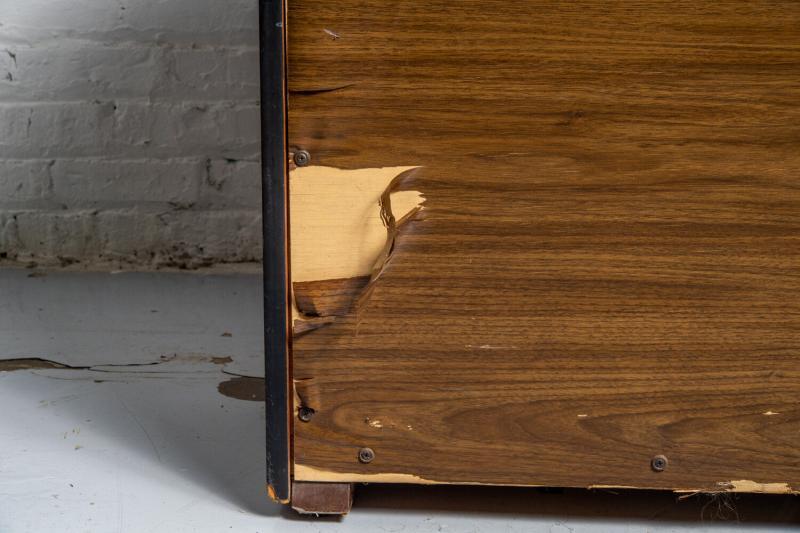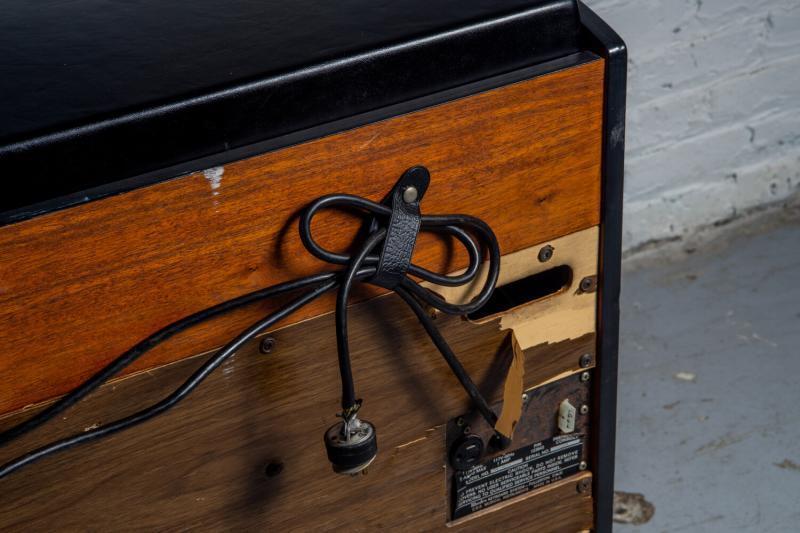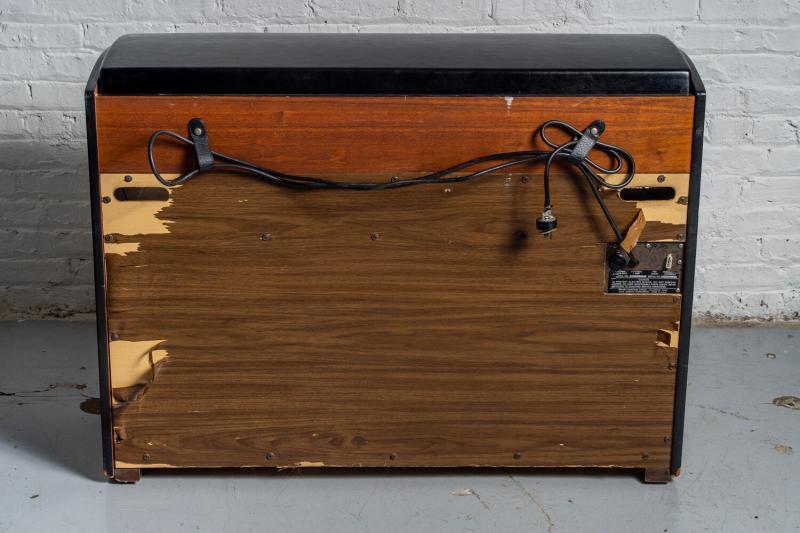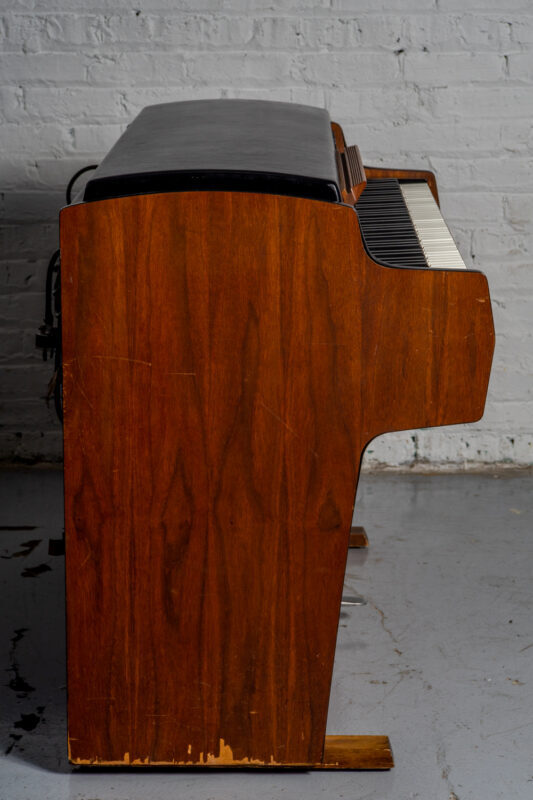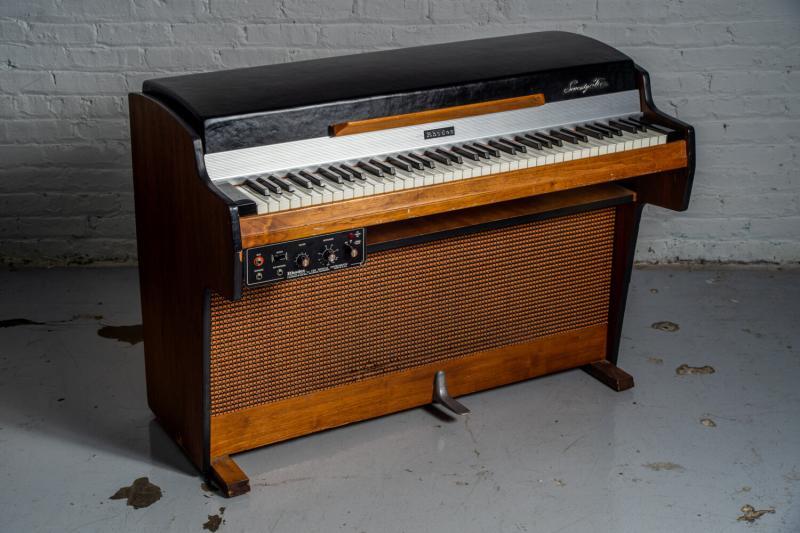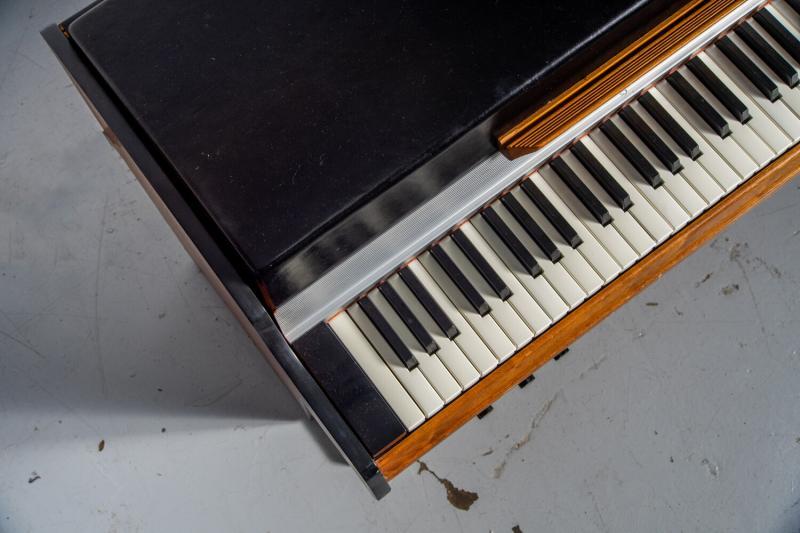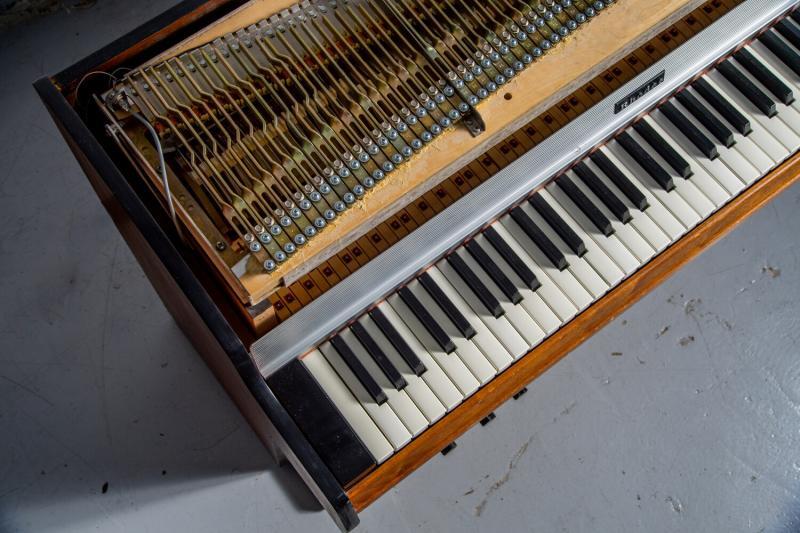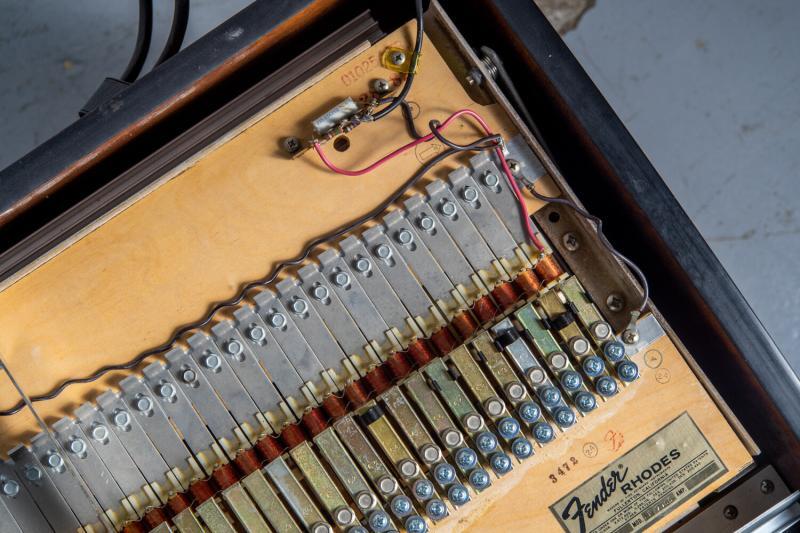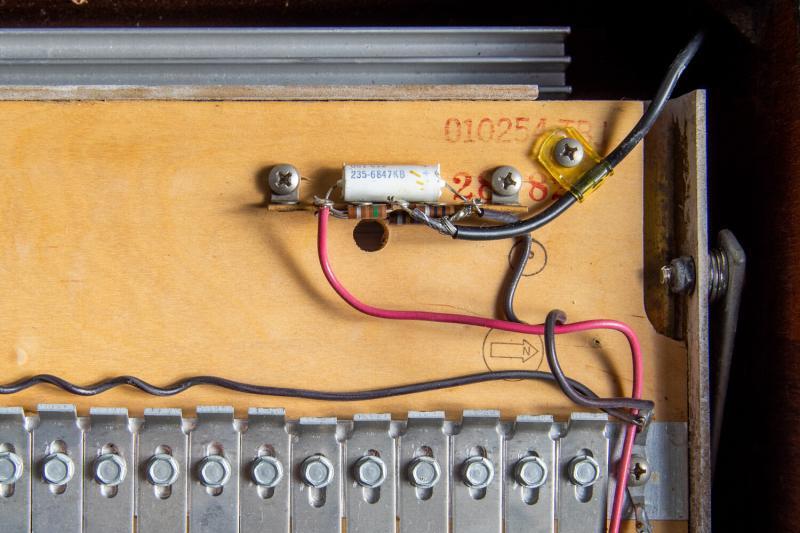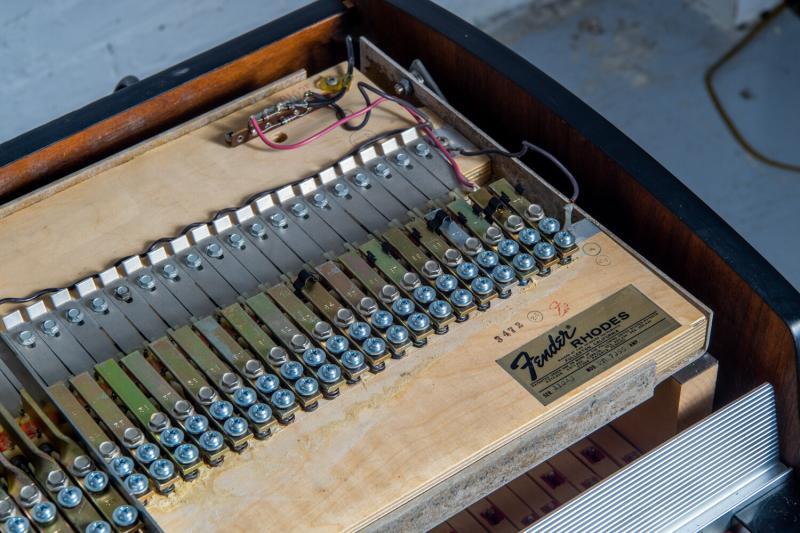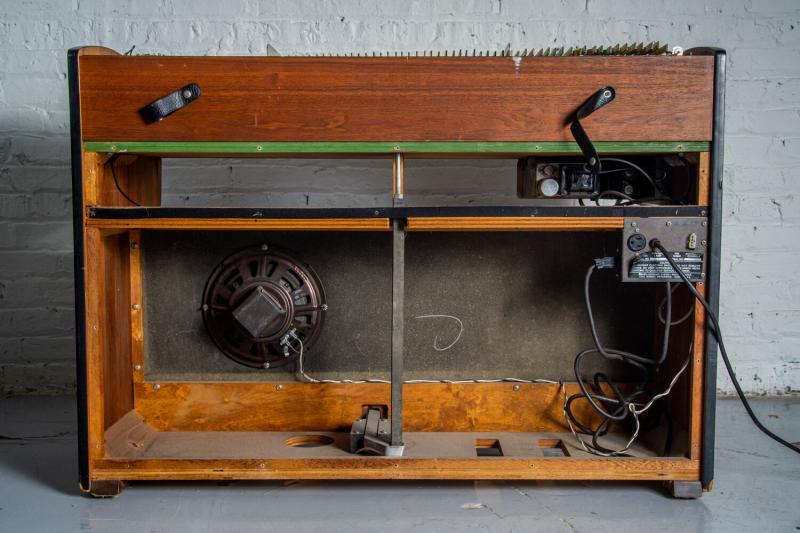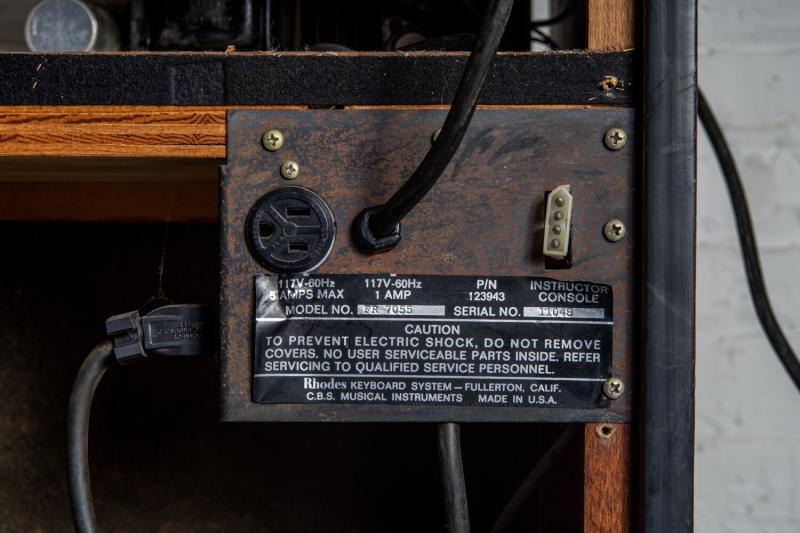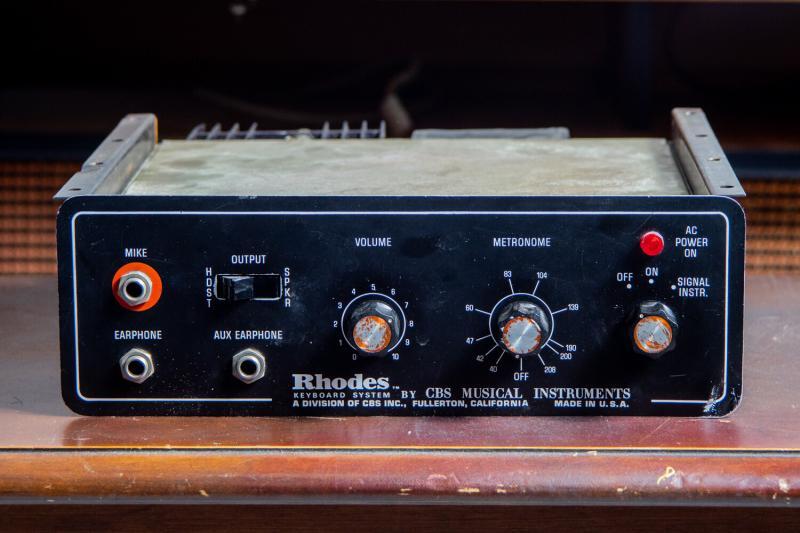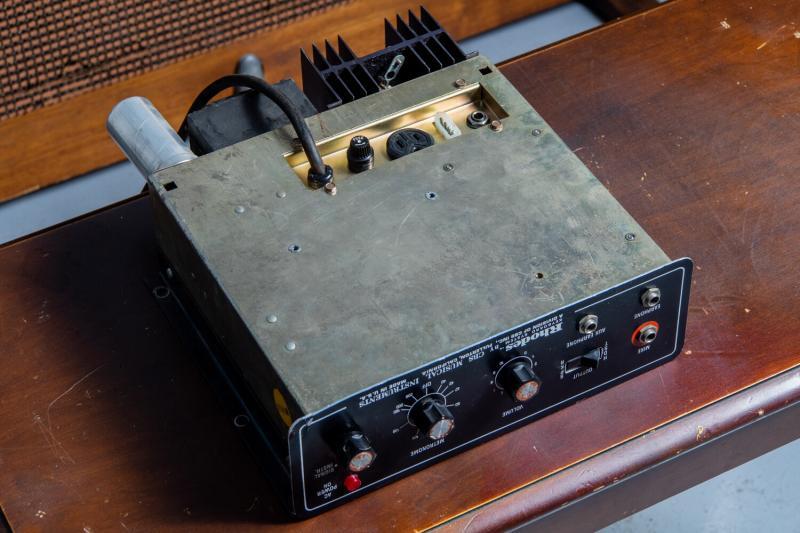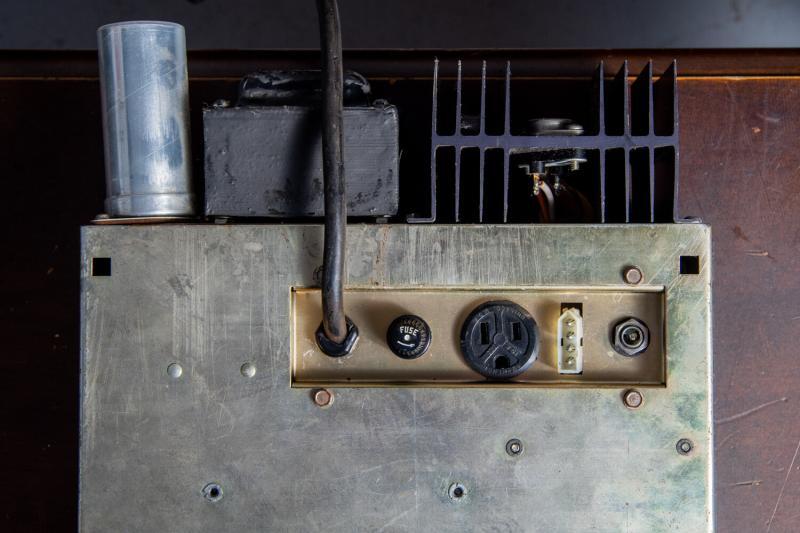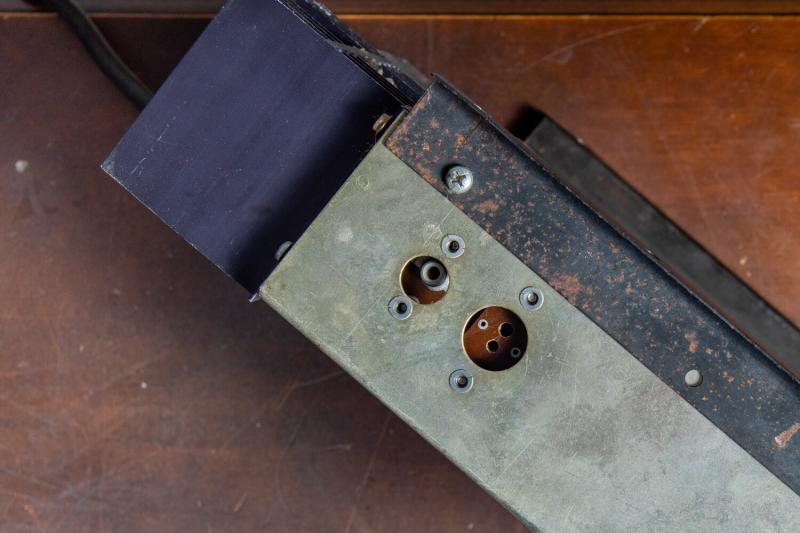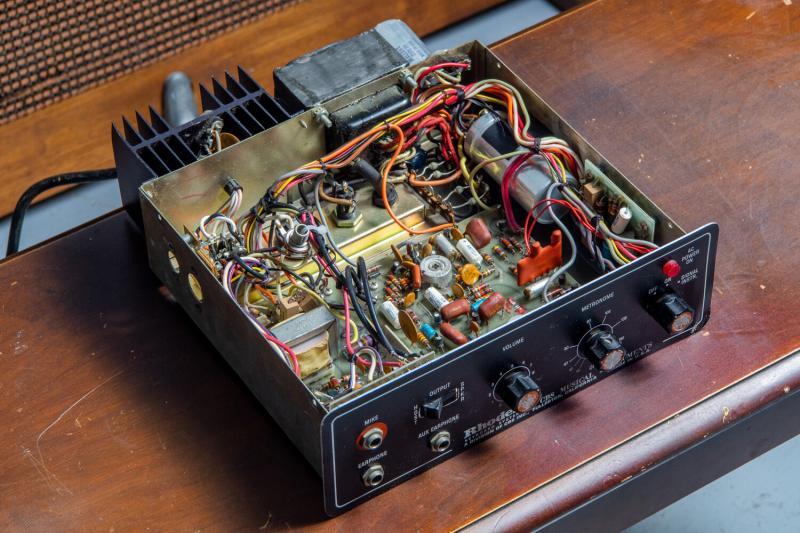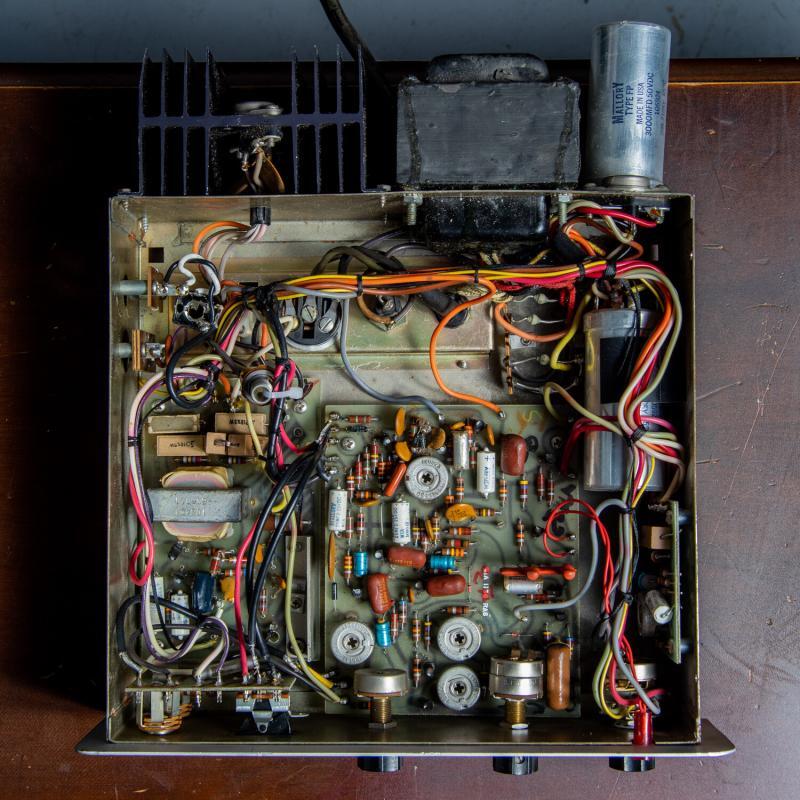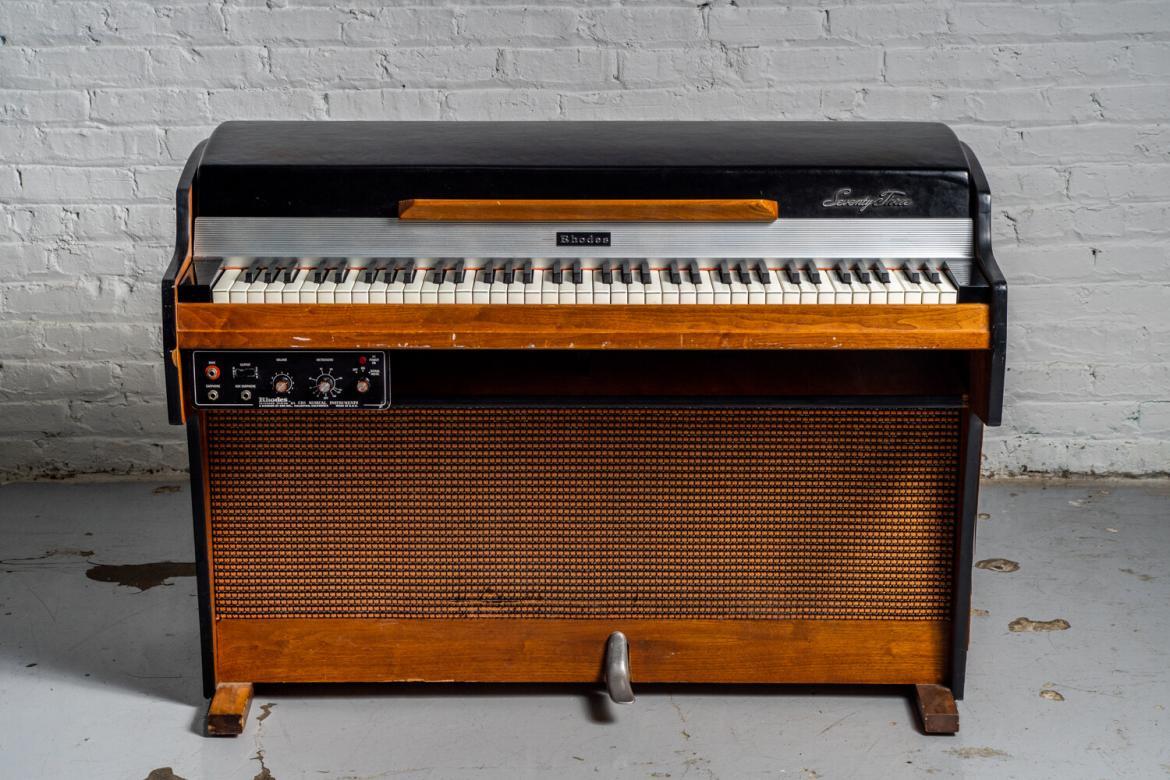
After the iconic “Jetsons” pianos of the late 60’s, Rhodes introduced a new education series. These pianos were housed in a more subtle walnut veneered cabinet and featured an on board metronome and connections to a teacher module. The student can monitor with headphones or a built in 10 inch speaker. Under the hood, the tone producing components are the same as a 73 key stage piano. Sometimes referred to as the KMC 1 (Keyboard Music Center), there were also variations of this model designed for home use that had an on board cassette recorder.

Skirted key caps as is common with pianos from this era.
This was the first model to be branded solely as "Rhodes" (the stage/suitcase piano line did not switch over until late 1974).
Real walnut accents add an element of "class" to the classroom.
Onboard amplifier sits below the keyboard
Imagine a whole classroom of these beasts!
These models originally included an acrylic music rack similar to those seen with Hohner Clavinet pianos.
The back of this unit has seen better days!
Detail of the peeling faux veneer.
The fraying power cable was replaced after these photos were taken.
Rear view.
Walnut veneered side panel.
Under the hood is essentially a Fender Rhodes Mark I stage piano, mounted into a bulky cabinet.
Our restoration included rotating the original cube tips for a fresh striking surface.
The extra electronics on the top right are used to interface with an onboard cassette recorder (available on home models).
The harp date stamp is misprinted and reads '82 as the manufacture date.
Model 7055
The electronic circuitry carried over from the earlier Jetsons design, and is rather primitive by today’s standard. The amplifier is under powered and distorts relatively easily. It is essentially a single power module, just like the ones found in a Peterson era suitcase piano. However, with a proper setup, the piano still sounds and plays wonderfully.

Rear panel removed to show the 10" speaker and mounted amplifier.
Detailed view of rear connections.
The amplifier's control panel allowed students to change monitoring and activate a metronome.
The bottom of the amplifier unit.
Auxiliary power, fuse, instructor module connections and our modified auxiliary output on the bottom of the amp.
Harp and speaker connections on the side of the amplifier.
A look inside the Rhodes 7055 amplifier.
Detailed view of the electronics. This design featured a single module of a Rhdoes Peterson era power amp.
This particular instrument came to us for a “Works” level of service. Our restoration includes a fresh set of tonebar isolation grommets and screws/washer, hammer tip rotation, and a comprehensive strikeline and escapement setup. After voicing and tuning the piano, we modified the 1/4″ output at the bottom of the amplifier to serve as a line out straight from the harp, bypassing all the other electronic circuitry. This jack is switched and cuts the on board speaker when engaged.
Please enjoy a couple videos of this piano in action! Performance by Matt Blocher at the Chicago Electric Piano Co.
Too High – Stevie Wonder
Spain – Chick Corea (feat. on board metronome!)
Comments (9)
-
I’d love to see one of those models with the onboard cassette recorder! You could make an entire tape of Chick Corea covers with metronome accompaniment!
-
Sounds really nice.
-
I believe I have this model. What would it be worth? I’m looking to sell.
-
Tough to say. They’re not necessarily the most sought after models, but they do make great home/studio Rhodes pianos or good candidates for Custom Shop restorations. If you want us to take a look at it please email info@chicagoelectricpiano.com. Thanks!
-
-
Is there any vibrato on either this or the home model? I can’t see a control for this on any of the photo. Many thanks.
-
Is there a vibrato control on this or the home model? Many thanks 🙏
-
The Rhodes classroom models do not have vibrato/tremolo or preamp controls. Only volume and a metronome.
-
-
Just found one of these in a basement. It sounds totally incredible. I can’t imagine how fun it would have been to have been an actual student on one of these babies. dAmn.
-
There’s a guy in my city who has one. He bought it from a guy for $45… I’ll do everything in my power to own this beauty. Now that I see it has a built in metronome, I’m losing my mind !


